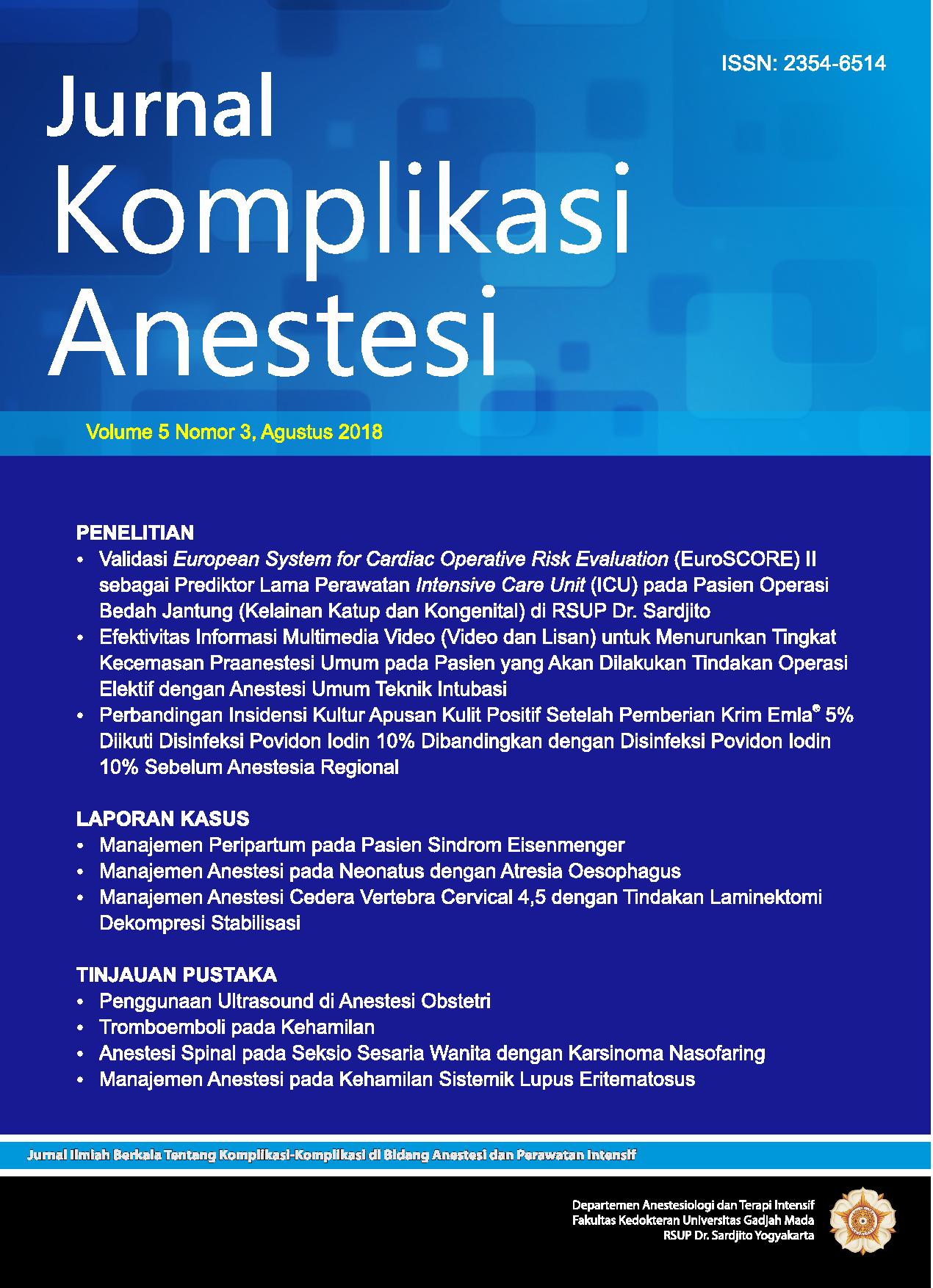Manajemen Peripartum pada Pasien Sindrom Eisenmenger
Abstract
Eisenmenger’s syndrome is the most severe form of pulmonary hypertension associated with congenital heart defects. Maternal mortality rates in female patients with Eisenmenger syndrome are still very high (30-50%). The main causes of death are hypovolemia, thromboembolism and preeclampsia. Pregnancy should be avoided in women with Eisenmenger syndrome because of high maternal mortality and a poor prognosis for babies. Epidural has been proven to be preferred for the delivery of labor and cesarean section in pregnant women with Eisenmenger syndrome. A 30-year-old woman with a 32-week pregnancy was diagnosed with Eisenmenger’s syndrome. She was diagnosed with congenital heart disease during antenatal care, she was never diagnosed with congenital heart disease before. Blood pressure examination was obtained 110/75 mmHg, heart rate 82 times per minute, respiratory rate 18-20 times / minute, with oxygen saturation 80-84% using nasal cannula 3 liters / minute. An L4-5 epidural catheter was placed with a catheter tip in L1. Intermittent Epidural Labor Analgesia (ELA) uses ropivacaine 0.0625% + fentanyl 0.125 mcg 5 cc, which is adjusted to the delivery process. During stable hemodynamic delivery with VAS 0. The main goal of handling Eisenmenger’s patients is to minimize pulmonary vascular resistance (PVR), and decrease systemic vascular resistance (SVR) and reduce catecholamine release. To maintain a balance between epidural effects on SVR and PVR, we use a combination of low concentrations of ropivacaine and opioids.

Copyright (c) 2019 Juni Kurniawaty

This work is licensed under a Creative Commons Attribution-NonCommercial-ShareAlike 4.0 International License.
The Contributor and the company/institution agree that all copies of the Final Published
Version or any part thereof distributed or posted by them in print or electronic format as permitted herein will include the notice of copyright as stipulated in the Journal and a full citation to the Journal.
















